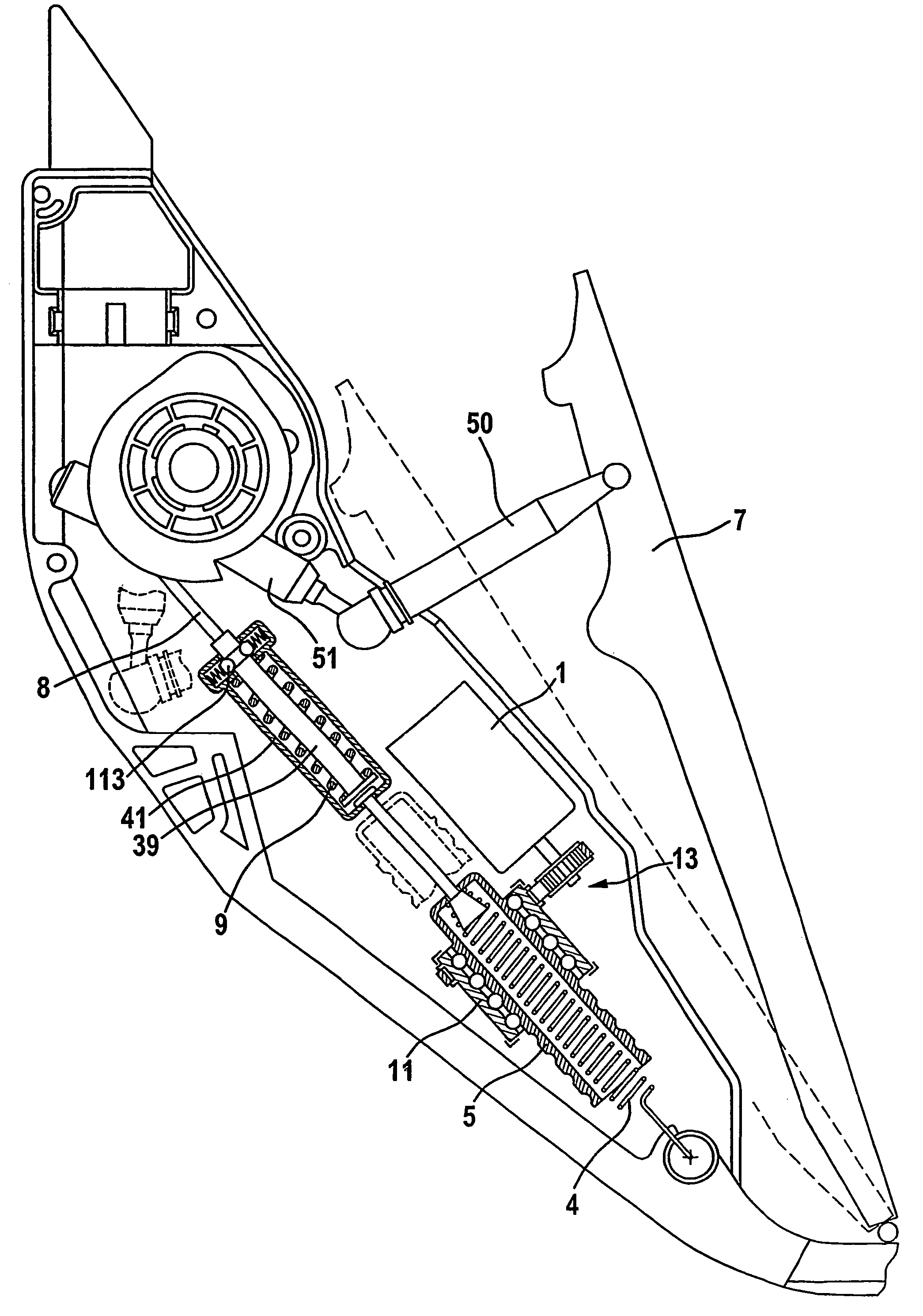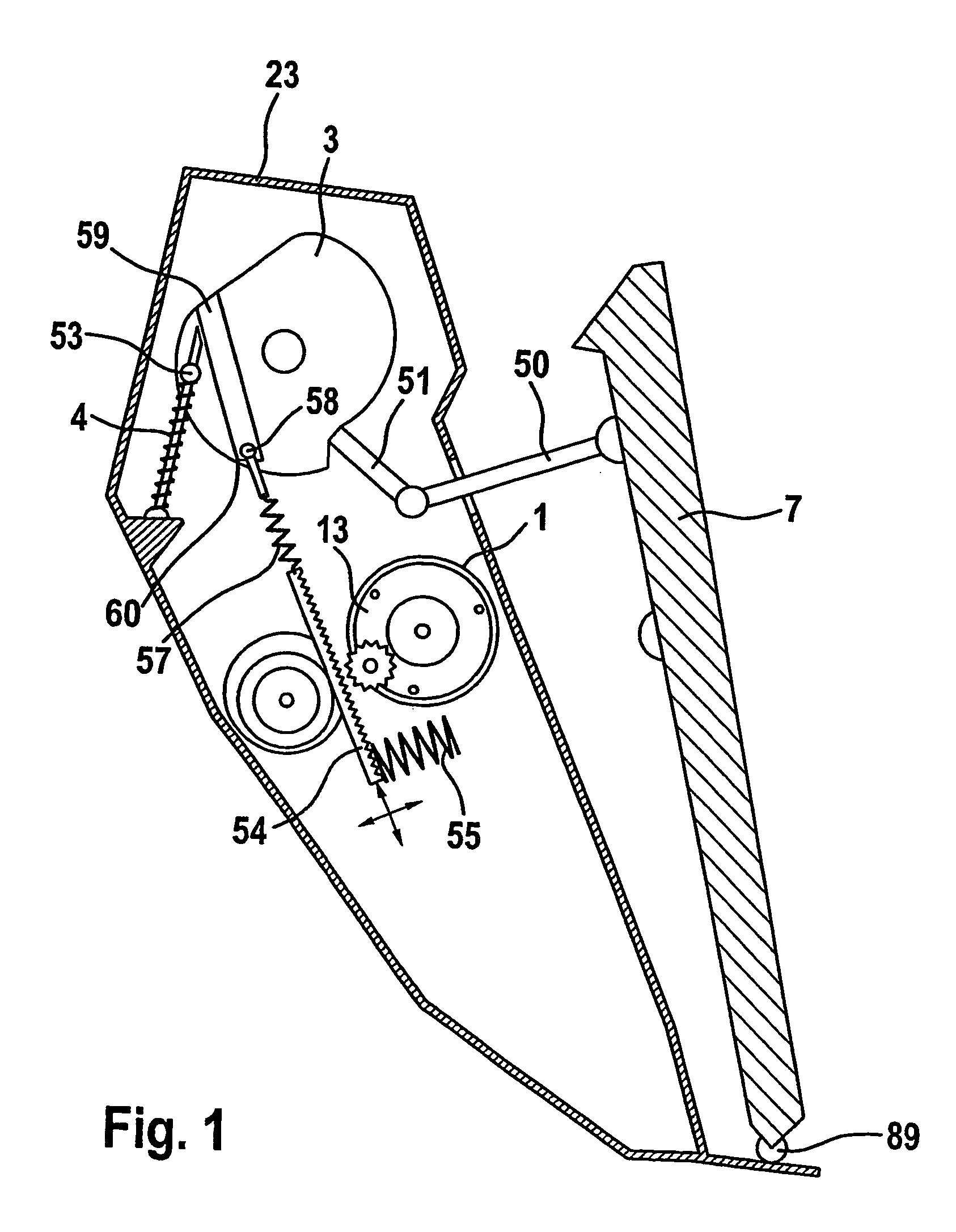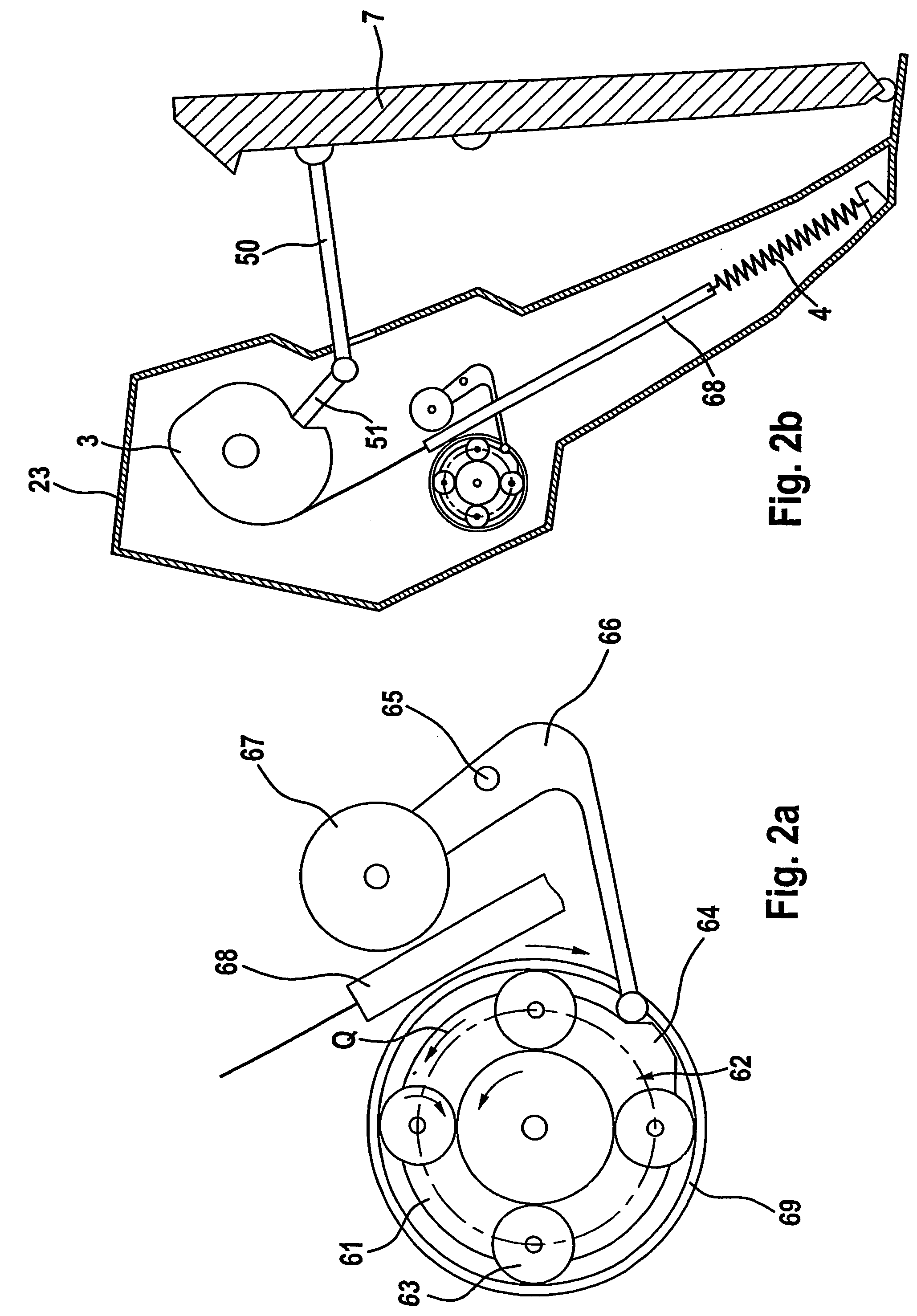Device with additional restoring force on the gas pedal based on the deviation of a vehicle parameter from the set value
a technology of vehicle parameter and gas pedal, which is applied in the direction of mechanical control devices, manual control with single controlling member, instruments, etc., can solve the problems of gas reduction, ineffective force exerted by the driver, and inability of the driver to increase the speed in excess,
- Summary
- Abstract
- Description
- Claims
- Application Information
AI Technical Summary
Benefits of technology
Problems solved by technology
Method used
Image
Examples
embodiment 1
According to FIG. 1
[0078]A fixed or a displaceable stop is used in some of the embodiments suggested herein below. Depending on the position of the stop, the engine torque acts in a defined pedal position in opposition to the pedal force or with respect to the stop. It is not only necessary to adapt the position of the stop to the desired driving speed but also to the driving situation. The stop is an adjustable rope slack in another solution. Different therefrom, the following function without a stop is proposed in the embodiment 1.
[0079]In FIG. 1 a pedal board 7 is articulated at a housing 23 of a pedal module. A cam plate 3 is rotatably arranged in housing 23. A coupling lever 50 cooperating with a turning lever 51 fixed to the cam plate makes catch at the pedal lever 7 configured as a board. It can be seen that the cam plate 3 is turned clockwise upon a counterclockwise rotation of the pedal lever 7. A restoring spring 4 which is referred to as return spring or retracting spring...
embodiment 2
According to FIG. 2a and FIG. 2b
[0085]A fixed or a displaceable stop is used in some of the embodiments that will be suggested hereinbelow. Depending on the position of the stop, the motor torque acts in opposition to the pedal force or with respect to the stop in a defined pedal position. It is not only necessary to conform the position of the stop to the desired driving speed but also to the driving situation. In another solution, the stop is realized by an adjustable slack of rope. Different herefrom, the following function that does not provide for a stop is suggested in the embodiment 2.
[0086]The basic design of the embodiment shown in FIG. 2 again corresponds largely to the design according to FIG. 1 and shall not be explained more closely. When the motor (not shown in FIG. 2) is started in the embodiment of FIG. 2, a planet carrier 61 of the planetary gearing illustrated in FIG. 2a will turn in the plotted direction Q. The result is that the pressing roller 67 is urged again...
embodiment 3
According to FIG. 3a to FIG. 3c
[0100]The Force-Feedback unit (hereinbelow called FFE) shown in the drawings (see especially FIG. 3a) is connected to the accelerator pedal 7 at the point where the translation motion of the pedal or the pedal linkage (e.g. the coupling lever 50 in FIG. 2) is converted into a rotation. This point may e.g. be the axis of rotation of the pedal lever 7 or the axis of rotation of the cam plate 3 (cf. FIG. 1). Normally, it is the point where likewise the sensor for determining the angle of rotation is connected.
[0101]The sketches are only meant to illustrate the mode of operation, in all other respects the mechanics shown in FIGS. 3a to 3c is preferably integrated into the pedal module, and a housing 23 generally bounds the pedal module. The pedal module typically accommodates the restoring spring that resets the pedal 7 as a standard, a cam plate deviating the force of the restoring spring, and a coupling lever that transmits the force of the restoring sp...
PUM
 Login to View More
Login to View More Abstract
Description
Claims
Application Information
 Login to View More
Login to View More - R&D
- Intellectual Property
- Life Sciences
- Materials
- Tech Scout
- Unparalleled Data Quality
- Higher Quality Content
- 60% Fewer Hallucinations
Browse by: Latest US Patents, China's latest patents, Technical Efficacy Thesaurus, Application Domain, Technology Topic, Popular Technical Reports.
© 2025 PatSnap. All rights reserved.Legal|Privacy policy|Modern Slavery Act Transparency Statement|Sitemap|About US| Contact US: help@patsnap.com



